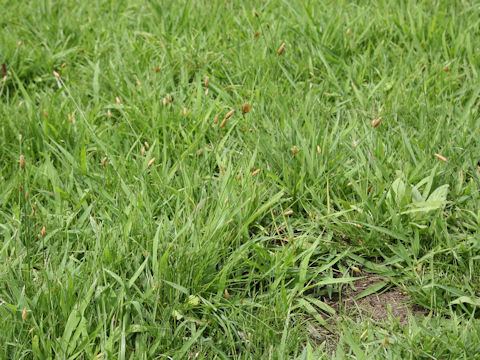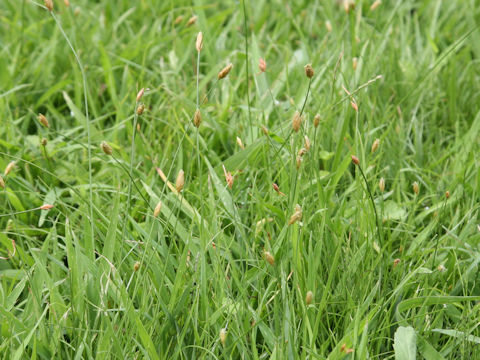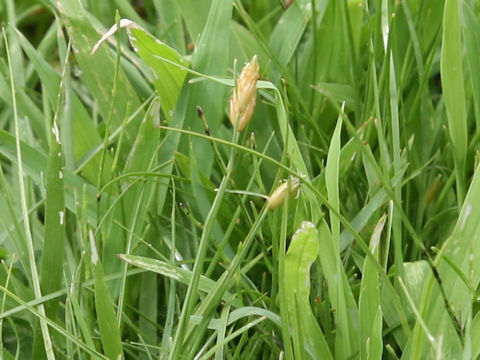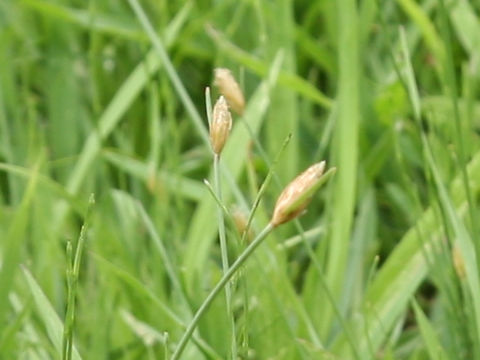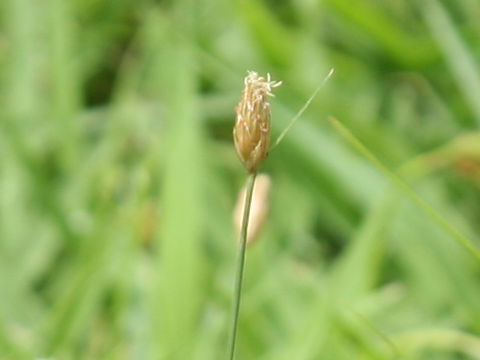
|
The "Yama-i" (Fimbristylis subbispicata) belongs to Cyperaceae (the Sedge family). It is a perennial herb that is distributed throughout Japan, Taiwan, the Korean Peninsula, China, and Vietnam. It grows in dense clusters in sunny marshy areas and is 10 to 60 cm tall. The culms are erect, and the leaves are linear, thin, somewhat stiff, about 1 mm wide, and hairless. The basal sheathing stalk is brownish. The inflorescences are produced at the top of the stem from July to October. The inflorescence is usually a single spikelet with a single bract leaflet at its base. The fruit is a broadly ovate achene. The Japanese name comes from "rush", which grows in the mountains. It is called "水蔥" in Taiwanese Chinese and "双穗飄拂草" 'shuang sui piao fu cao) in Chinese.
|
